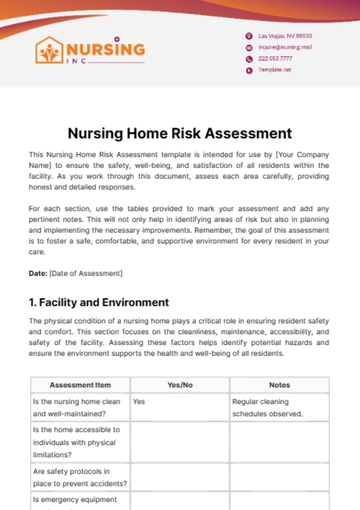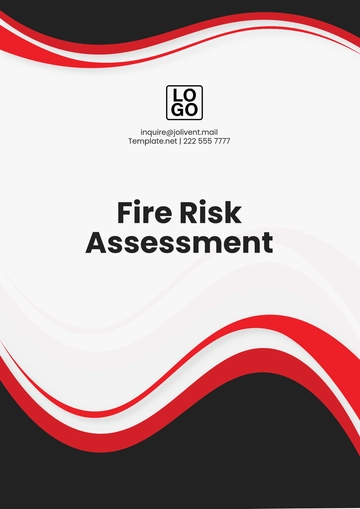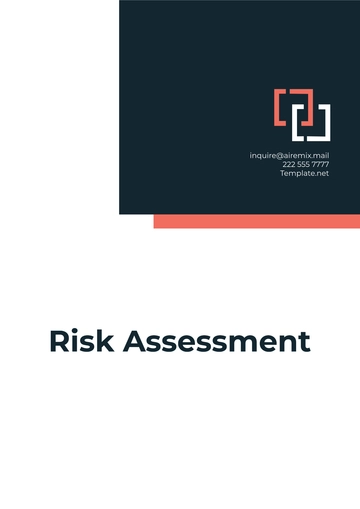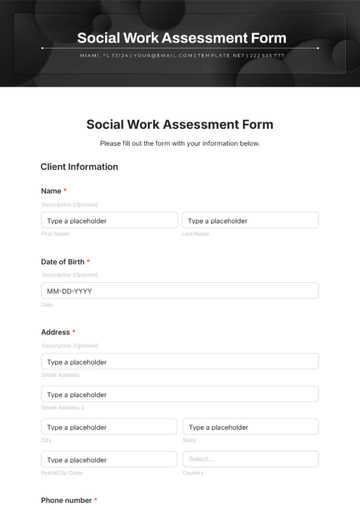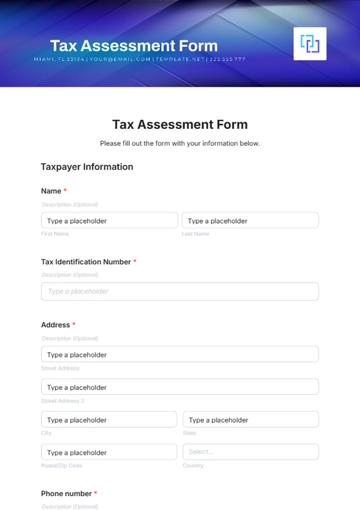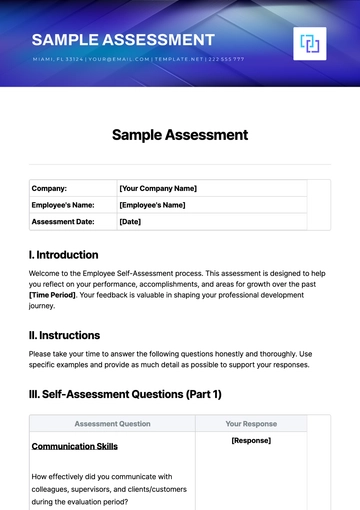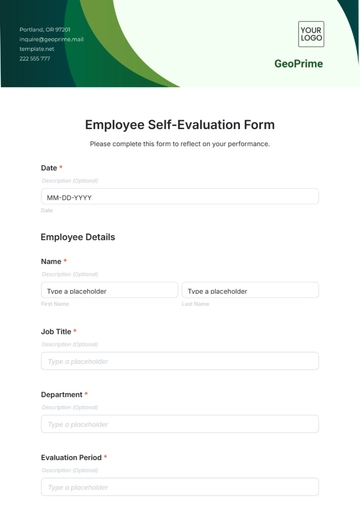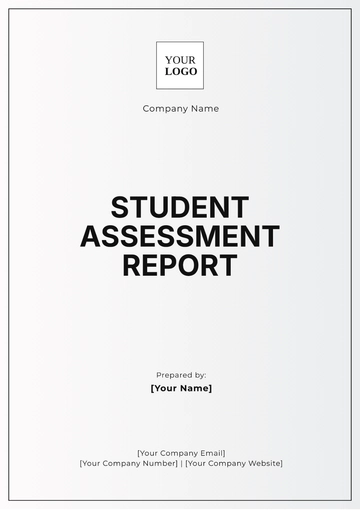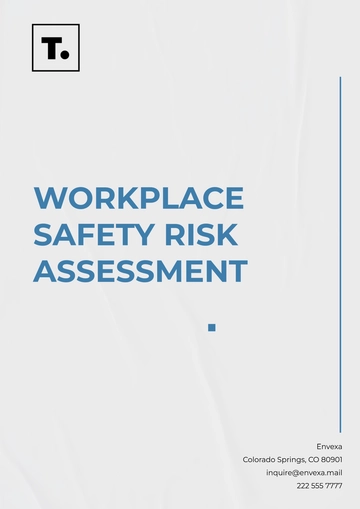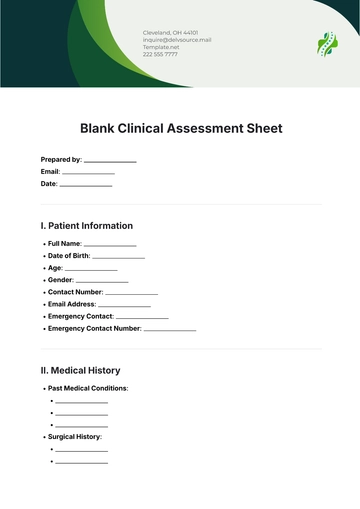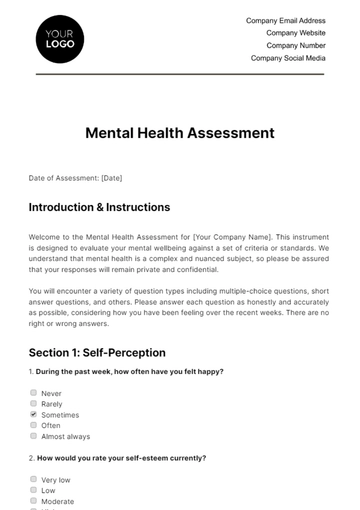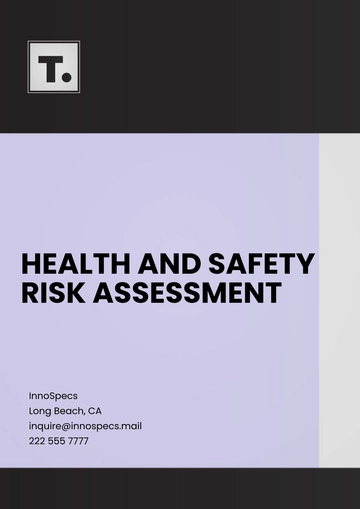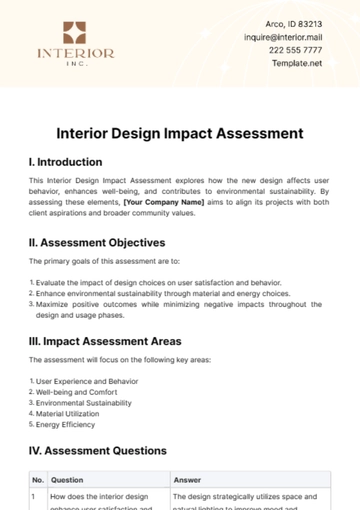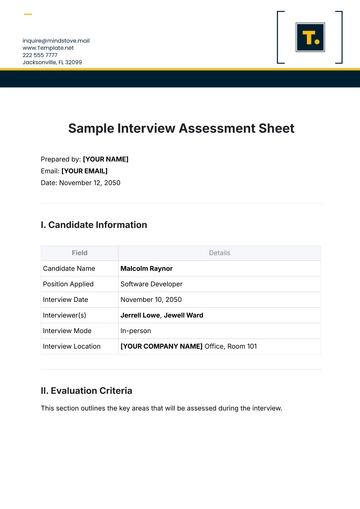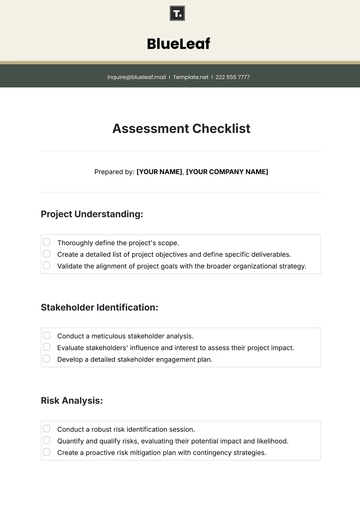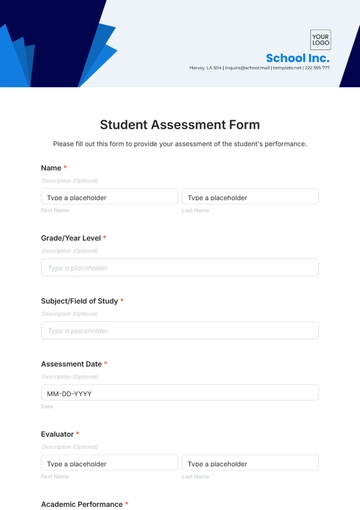Free Law Firm Risk Assessment Report
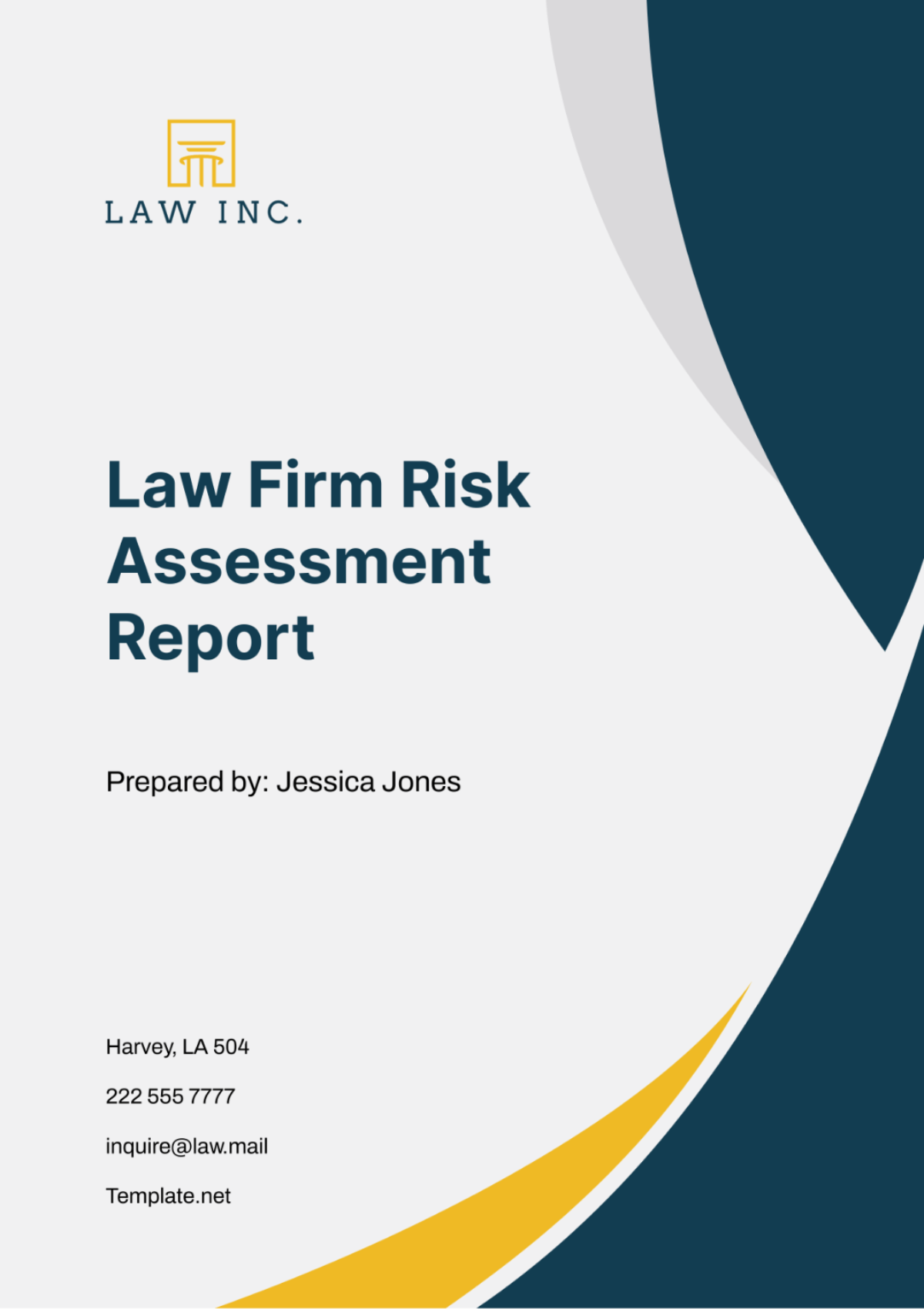
I. Executive Summary
This report provides a comprehensive analysis of the risk landscape facing [Your Company Name]. Through a systematic evaluation of various risk categories—legal, financial, operational, reputational, and strategic—this assessment identifies the primary vulnerabilities and proposes targeted strategies for mitigation. The findings indicate critical areas requiring immediate attention include cybersecurity threats, compliance with new regulatory frameworks, and managing client relationships to safeguard the firm's reputation. We recommend a series of strategic actions to fortify defenses, enhance operational efficiency, and ensure sustained compliance with legal and ethical standards.
II. Introduction
Objective: The primary objective of this risk assessment is to identify and evaluate potential risks that could impact [Your Company Name], with a focus on implementing effective mitigation strategies.
Scope: The assessment covers all aspects of operations at [Your Company Name], from legal practices and financial operations to client services and strategic planning.
Methodology: The methodology includes a combination of qualitative assessments through interviews with key personnel, quantitative analyses using historical data, and benchmarking against industry standards.
III. Legal Risks
Compliance Risks
Regulatory Compliance: Continuous changes in the legal environment require ongoing adjustments to compliance protocols. The firm must ensure adherence to standards set by legal bodies at all levels—local, national, and international. Failure to comply can result in severe fines and damage to the firm's reputation.
Table 1: Compliance Requirements and Status
Requirement | Current Status | Compliance Deadline | Action Required |
|---|---|---|---|
GDPR | Partial | Q2 | Complete data audit |
HIPAA | Full | N/A | Ongoing monitoring |
Anti-Bribery | Partial | Q3 | Training for new staff |
Litigation Risks
Risks associated with litigation can originate from a variety of areas. On one hand, there is the potential for lawsuits originating from clients who may claim instances of malpractice causing them harm or loss. On the other hand, there could be disputes that emerge with partners or other firms that can also be a source of legal issues. Therefore, to drastically minimize this risk, the implementation of effective legal review processes, alongside efficient communication strategies with clients, is of utmost importance. With these key strategies in place, it is possible to mitigate and manage any potential contention before it escalates into full-fledged litigation.
Contractual Liabilities
The organization has an obligation to handle and control the various risks associated with instances of contract breaches, a failure to perform as stipulated in the contract, or disputes arising from disagreements over the terms and conditions of the contract. As a preventative measure to avoid any possible liabilities that may arise from these scenarios, it is highly recommended that the organization conducts regular and thorough assessments of its contract management processes to ensure they are effective.
IV. Financial Risks
Revenue Fluctuations: Economic downturns or shifts in market demand can significantly impact our revenue streams. Diversifying our client base and investing in emerging legal fields can reduce this vulnerability.
Cost Management: Uncontrolled increases in overhead and operational costs can erode profitability. Implementing stringent financial controls and regular budget reviews will help mitigate this risk.
Investment Risks: Investments in technology or acquisitions can entail significant financial commitments. A thorough due diligence process and a clear alignment with the firm's strategic goals are essential for managing investment risks.
V. Operational Risks
Technology and Cybersecurity: With increasing reliance on digital platforms, the risk of cyber-attacks is a major concern. Enhancing cybersecurity measures and regular audits are imperative to protect client data and firm operations.
Human Resources: Attraction and retention of top legal talent are crucial for the firm's success. Developing robust training programs and career development paths will mitigate the risk of losing key personnel.
Office and Facilities Management: Ensuring safe and secure office environments is vital. Regular safety drills and maintenance checks should be scheduled to prevent any disruptions in operations.
VI. Reputational Risks
Client Relationships: Maintaining high standards of service is essential for client retention and attraction. Regular client feedback mechanisms will help in promptly addressing any concerns, thereby safeguarding the firm's reputation.
Public Relations: Active management of public relations through regular updates and engagement on social media platforms can enhance the firm's image and mitigate negative publicity.
Ethical Practices: Adhering to the highest ethical standards is non-negotiable. Regular ethics training and a clear whistleblower policy will help maintain integrity within the firm.
VII. Strategic Risks
Market Changes: Staying abreast of trends in the legal industry is crucial for strategic planning. Regular industry analysis will help anticipate market shifts and position the firm advantageously.
Regulatory Changes: New regulations can impact various practice areas. A dedicated regulatory analysis team can provide early warnings and preparation strategies for upcoming changes.
Technological Advancements: Incorporating new technologies such as artificial intelligence in legal processes can offer significant competitive advantages but also come with adaptation challenges.
VIII. Risk Analysis and Evaluation
Risk Identification: Each department has identified specific risks based on its operational focus.
Risk Impact and Likelihood: Each identified risk has been evaluated for its potential impact on the firm and the likelihood of occurrence.
Table 2: Risk Evaluation Matrix
Risk Category | Specific Risk | Impact | Likelihood | Priority |
|---|---|---|---|---|
Operational | Data Breach | High | Medium | High |
Financial | Fluctuations in Revenue | Medium | High | Medium |
Strategic | Failure to Adopt AI | High | Low | Medium |
IX. Risk Mitigation Strategies
Legal and Compliance: Implement a continuous legal education (CLE) program for all attorneys to stay updated on legal changes and compliance requirements.
Financial Controls: The organization needs to implement and introduce enhanced and more rigorous financial reporting and budgeting processes. With these stringent procedures in place, the firm will be in a better position to monitor and manage its expenditures and investments more closely and with increased precision. This is vital for ensuring the financial health of the company and optimal resource allocation.
Operational Improvements: Upgrade cybersecurity infrastructure and protocols. Introduce a more comprehensive training program focusing on security practices for all new and existing employees.
Reputation Management: It is important to create and establish a well-organized plan for crisis management. This plan should be designed in such a way that it allows us to react swiftly and proficiently in situations where we might encounter unfavorable publicity or any problems related to our clients.
Strategic Planning: Establish a strategic review board to evaluate the potential impacts of market and technological changes and to guide the firm's long-term strategies.
X. Implementation Plan
The following table outlines the specific actions, responsible parties, and timelines for implementing the recommended risk mitigation strategies.
Table 3: Implementation Plan
Strategy Component | Action Item | Responsible Party | Deadline |
|---|---|---|---|
Cybersecurity Upgrade | Install updated firewalls | IT Department | Q1 |
Financial Reporting | Develop new budget templates | Finance Team | Q2 |
Regulatory Compliance | Schedule quarterly reviews | Compliance Officer | Ongoing |
XI. Monitoring and Review
To ensure that [Your Company Name] remains vigilant and responsive to both internal and external changes that could impact risk levels, a robust Monitoring and Review system is essential. This section details the systematic approach for the ongoing evaluation of risk management strategies and their effectiveness.
Quarterly Risk Reviews: Every quarter, the Risk Management Committee will convene to review the current risk landscape. This includes evaluating the status of mitigation efforts, the emergence of new risks, and changes in the impact or likelihood of existing risks. The committee will utilize performance indicators and benchmarks to assess the adequacy of current risk controls.
Annual Risk Assessment Update: Annually, a comprehensive reassessment of the entire risk landscape will be performed. This will involve re-evaluating all strategic, operational, financial, legal, and reputational risks in light of new developments and insights gained over the year. This process ensures that the risk management strategies remain aligned with the firm’s evolving objectives and external environment.
Real-Time Risk Monitoring Tools: Implementation of advanced monitoring technologies that provide real-time data on key risk indicators. For example, cybersecurity threats can be monitored using advanced intrusion detection systems, and compliance with legal standards can be tracked through automated compliance software.
Feedback Mechanisms: Establishing a structured feedback loop involving all stakeholders, including employees at all levels, clients, and partners. This will involve regular surveys, suggestion boxes, and forums that encourage open communication about potential risks and the effectiveness of current measures.
Table 4: Monitoring and Review Schedule
Activity | Description | Frequency | Responsible Party |
|---|---|---|---|
Quarterly Risk Review | Review and update risk mitigation strategies | Quarterly | Risk Management Committee |
Annual Risk Assessment | Comprehensive re-evaluation of the risk landscape | Annually | Risk Management Committee |
Real-Time Monitoring | Continuous monitoring of critical risk factors | Continuous | IT Department |
Stakeholder Feedback | Collection and analysis of feedback from internal and external stakeholders | Bi-annually | Human Resources |
XII. Conclusion
The comprehensive risk assessment report for [Your Company Name] underscores the importance of a proactive and dynamic approach to risk management. The identification and mitigation of potential risks across legal, financial, operational, reputational, and strategic domains are vital to sustaining the firm’s integrity, competitiveness, and market position.
The recommended strategies, coupled with a strong implementation and monitoring plan, are designed to not only address the current risk profile but also to provide flexibility to adapt to future challenges. These efforts must be supported by a culture of risk awareness and continuous improvement within the firm. This culture should be fostered by leadership at all levels, ensuring that risk management remains a key focus in all decision-making processes.
Effective risk management is an ongoing process that enhances decision-making and supports achieving strategic objectives. By embracing these principles, [Your Company Name] will strengthen its resilience against potential threats and capitalize on opportunities in a rapidly evolving legal landscape.
The implementation of these risk management practices will require dedicated resources, continuous training, and an unwavering commitment to ethical standards and excellence. As [Your Company Name] moves forward, it will continue to refine its approaches and strategies, ensuring that it remains at the forefront of the legal industry, not only in terms of legal expertise but also in its capacity to manage and mitigate risks efficiently and effectively.
- 100% Customizable, free editor
- Access 1 Million+ Templates, photo’s & graphics
- Download or share as a template
- Click and replace photos, graphics, text, backgrounds
- Resize, crop, AI write & more
- Access advanced editor
Mitigate potential risks with Template.net's Law Firm Risk Assessment Report Template. Crafted for thorough risk analysis, this template is fully customizable and editable via our Ai Editor Tool. Identify, evaluate, and strategize against potential threats to ensure proactive management and security. An essential tool for law firms prioritizing risk mitigation, exclusively available at Template.net.


